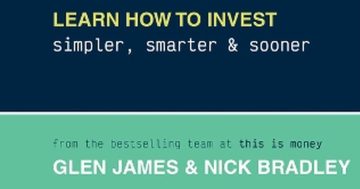Abi Tyas Tunggal* says the jargon doesn’t have to be alienating.
 If you’re reading this, it’s likely you’re looking to get a handle on some of the language.
If you’re reading this, it’s likely you’re looking to get a handle on some of the language.
Hopefully, we can make it easy to understand for the everyday Australian.
What is an exchange-traded fund (ETF)?
An ETF is a basket of investments (like stocks) bundled together into a fund that is traded on an exchange.
The fund owns the underlying assets, and if you buy a share of an ETF you own a portion of the fund.
It is common for an ETF to track an index which is a group of investments that is used to represent a portion of the market.
What is a stock?
A stock is a representation of ownership interest in a company.
So, when you own a company’s stock you own a portion of the company.
Stocks may also be called shares.
What is a share?
A company’s stock is broken down into shares.
If you own shares of a company, you’re a shareholder.
Also called stocks!
What are bonds?
When you buy a bond, it’s similar to loaning money to a business (or a government).
Bonds are “debt instruments”.
While you may think of a loan as a burden, they are essential parts of the economy.
Bonds are generally loans with time limits.
The company or government promises to pay you back (with interest) within a set time, which is why they are often considered safer investments and described as “fixed-income” assets.
What is a portfolio?
Your portfolio is made up of the investments you and/or the funds you invest in have purchased and haven’t sold.
If your only investment is Spaceship’s GrowthX, that’s your portfolio.
What is exposure?
Your exposure is what you are financially exposed to.
This can be downside risk (decrease in price) and the potential reward (increase in the price).
As an example, your equity exposure in Spaceship is the percentage of GrowthX that is made up of equities.
What are equities?
Equities are shares.
If you buy shares, you are buying equities.
As equities don’t pay a fixed interest rate (like bonds), there is no guarantee of income (of course, if a business is unable to repay their loans, a bond doesn’t guarantee income either).
What is performance?
When people talk about the performance of an investment, they are referring to how the investment has changed in value, negative or positive, over time.
Historical performance is how the investment performed in the past.
It’s important to note past performance is no guarantee of future performance.
It is simply a way to see how an investment performed in the past.
What is a fund name?
A fund name is simply the name of the fund.
Our fund name is Spaceship.
What is a dividend yield?
A dividend is a payment made to the company’s shareholders, usually it is a divvy of the company’s earnings and decided by the Board.
Dividends can come in many forms such as cash, shares or other property.
For example, if a company you hold shares in made a profit.
They may choose to distribute some of those profits through dividends.
The dividend yield is the amount a company pays in dividends each year relative to its share price.
What does ‘since inception’ mean?
Since inception is referring to the day the fund started.
Often, if you are looking at the historical performance of a fund, you’ll be able the see the performance since inception.
What is trading?
Trading is buy and selling, when people talk about trading in investment, they are talking about buying and selling financial instruments like stocks.
What does fiduciary mean?
Fiduciary duty is the highest standard of care.
When a person or an organisation is acting as a fiduciary, they must act in good faith and work for the benefit of their client, not themselves.
*Abi Tyas Tunggal is a cybersecurity writer at Spaceship.
This article first appeared at spaceship.com.au.











